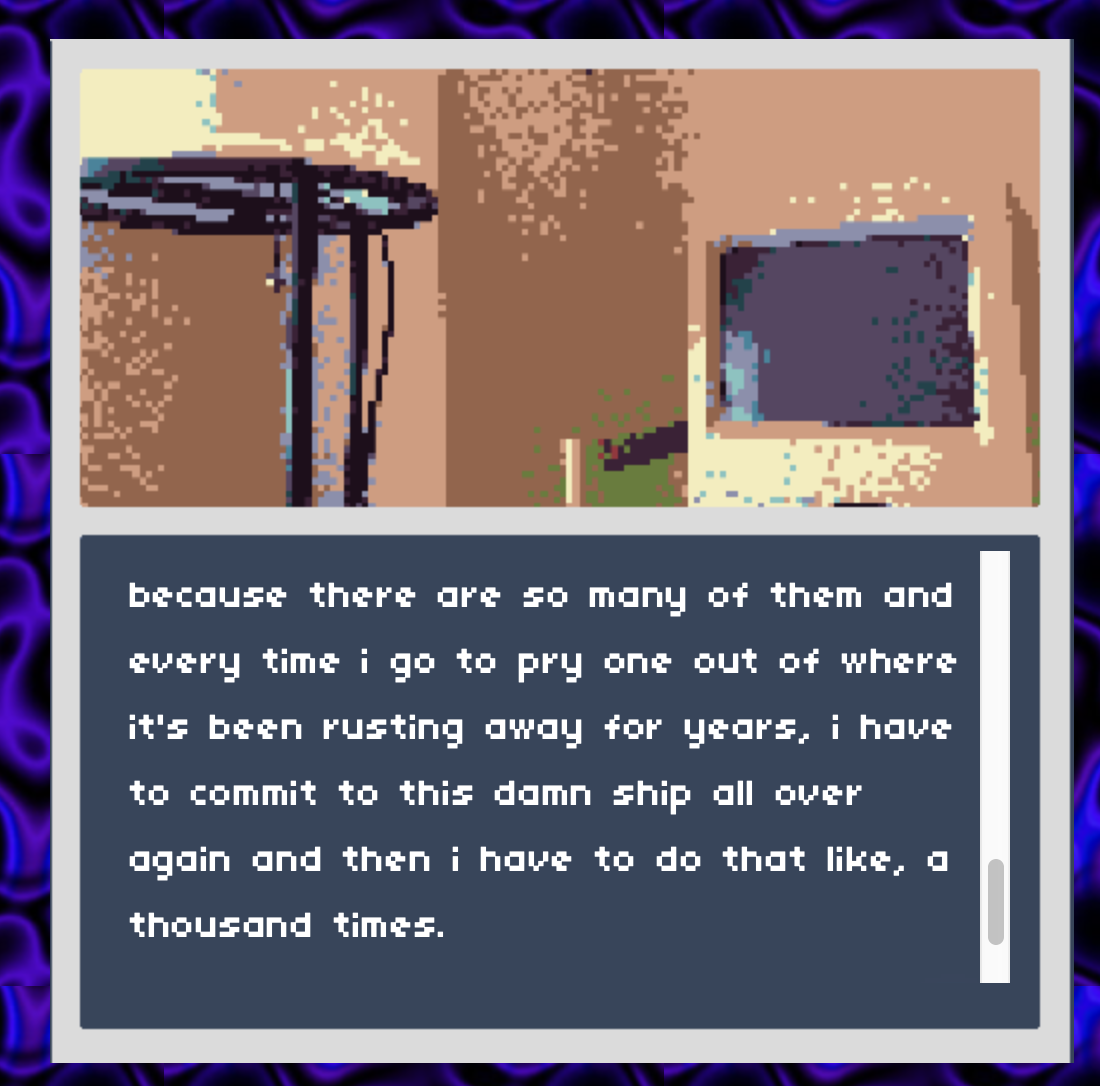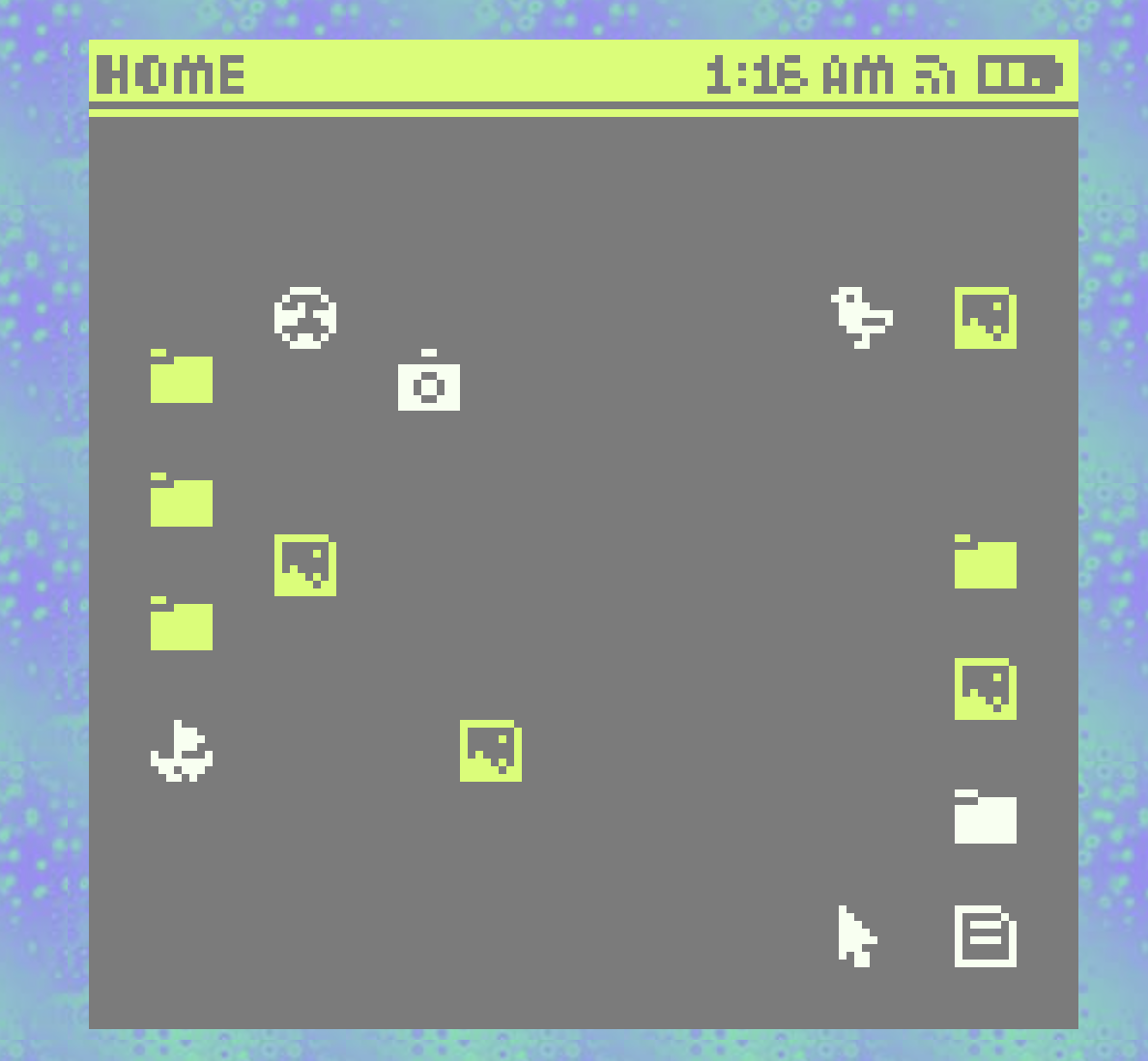THESE/US (click title to play!)
THESE/US is the final project for a games studies course taught by Patrick Jagoda which I took in early 2022. I have heard reports of some people having issues finishing the game properly, likely because I taught myself how to use both Twine and Bitsy for this project. A kind commentor has provided a possible fix, but I still need to apply it.
The aesthetics of THESE/US are, admittedly, completely insane. There was a method to my madness, I promise. I took a good deal of my aesthetic cues from Geocities archives after reading Salter and Maulthrop’s “Queer Twine and Camp” (Twining: Creative and Critical Approaches to Hypertext Narratives), an article which breaks down the history of queer hypertext, its origin in vibrant early-web communities, and camp’s influence on hypertext as a medium. Other aesthetic influences included 2012-2017 Tumblr and the campiness of “cringe culture,” as well as more concrete inspirations– Anna Anthropy, Porpentine, and the witty intertextuality of trans humorist Daniel M. Lavery. While a good deal of the choices I made were intentional hails to the maximalist, overstimulating game-spaces of Twine authors, as well as to the historical relevance of camp in queer web communities in the 1990s and 2000s, I also wanted to give myself permission to make things ugly and weird, because that’s what queerness is a lot of the time to me. While I did my best to craft an interface that was cohesive and bug-free, I also take pride in the Frankenstein’s monster that is my attempt to integrate both Bitsy and Twine into my narrative. I am endlessly grateful for the community of modders, coders, and authors responsible for the Twitsy hack, and credit them all in my game– at the same time, I’m honestly happy I threw myself into this with as little understanding of HTML and Javascript as I did, because the final product’s jankiness is very much in line with the spirit of queer DIY coders throughout the last 30 years.

As a text-based platform, Twine gave me the ability to fudge the rules and include what turned out to be most of my theoretical musings about online identity formation, as well as queer temporality as it relates to the “queer archival netself,” i.e. the selfhood constructed from many disparate online profiles that (more often than not) fall on a non-linear timeline of identity formation. While Twine lends itself more to branching path narratives than Bitsy, a platform primarily used by indie developers to create walking simulators and interactive essays, I consciously gave this game a single ending. My research (both for this game and for my thesis) has revolved around the role of Twine and Bitsy games in the queer trans indie gaming scene, specifically regarding the capacity for games much better than mine to create spaces of empowerment, authorship, and reclamation for trans people. As such, part of my goal in making this game was to work through experiences of my own gender and digital assemblage in a cathartic and productive way. Giving the game one ending– a hopeful ending– is my earned catharsis, especially after the horrific (and entirely avoidable, in retrospect) experience of having to comb through every social media account I’ve ever had.

The more I think about the Ship of Theseus puzzle, the less interested I am in coming up with a concrete solution. My original ending to the game had the player decide, but as lines were blurred between player, character, and myself, I became increasingly frustrated with the idea that something so fluid as identity could be “solvable.” Getting oneself out of Dodge on a self-made Ship of Theseus is the happiest ending I could give any character in this piece.
